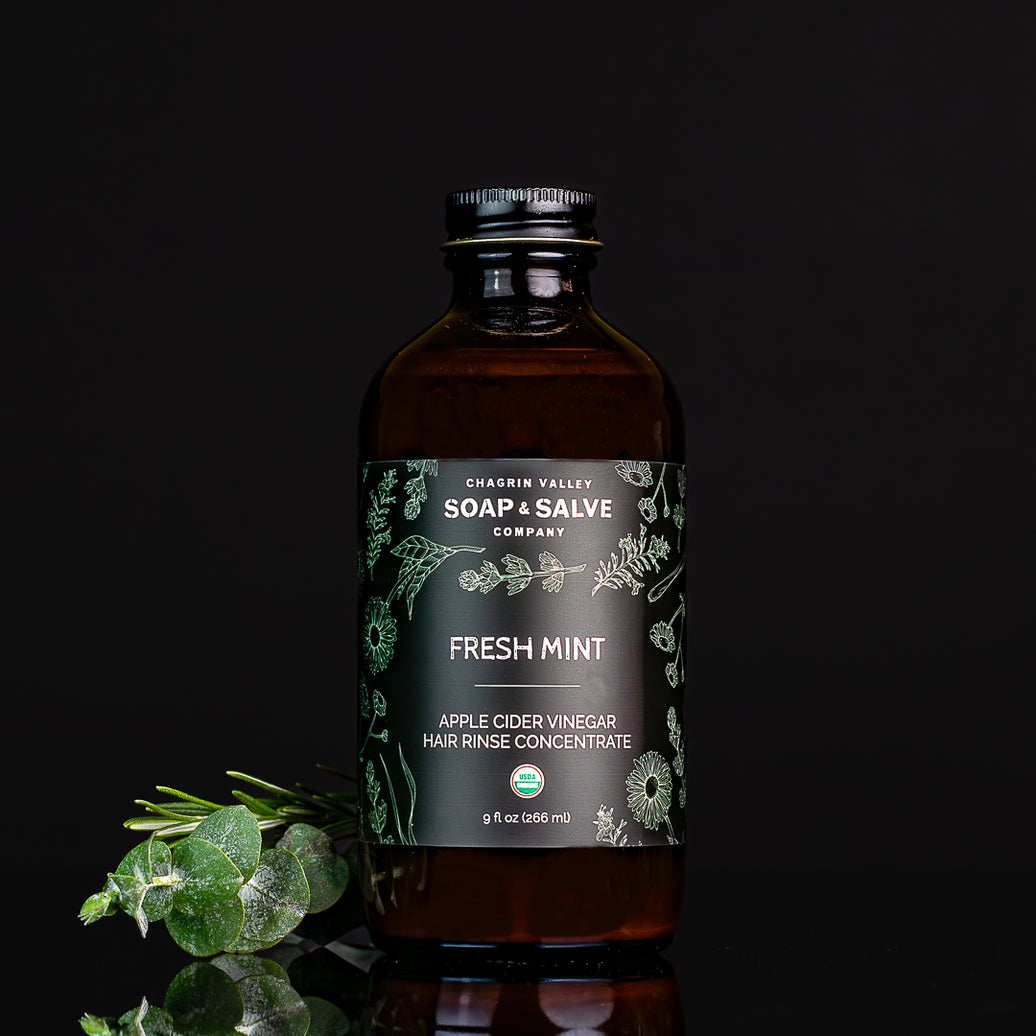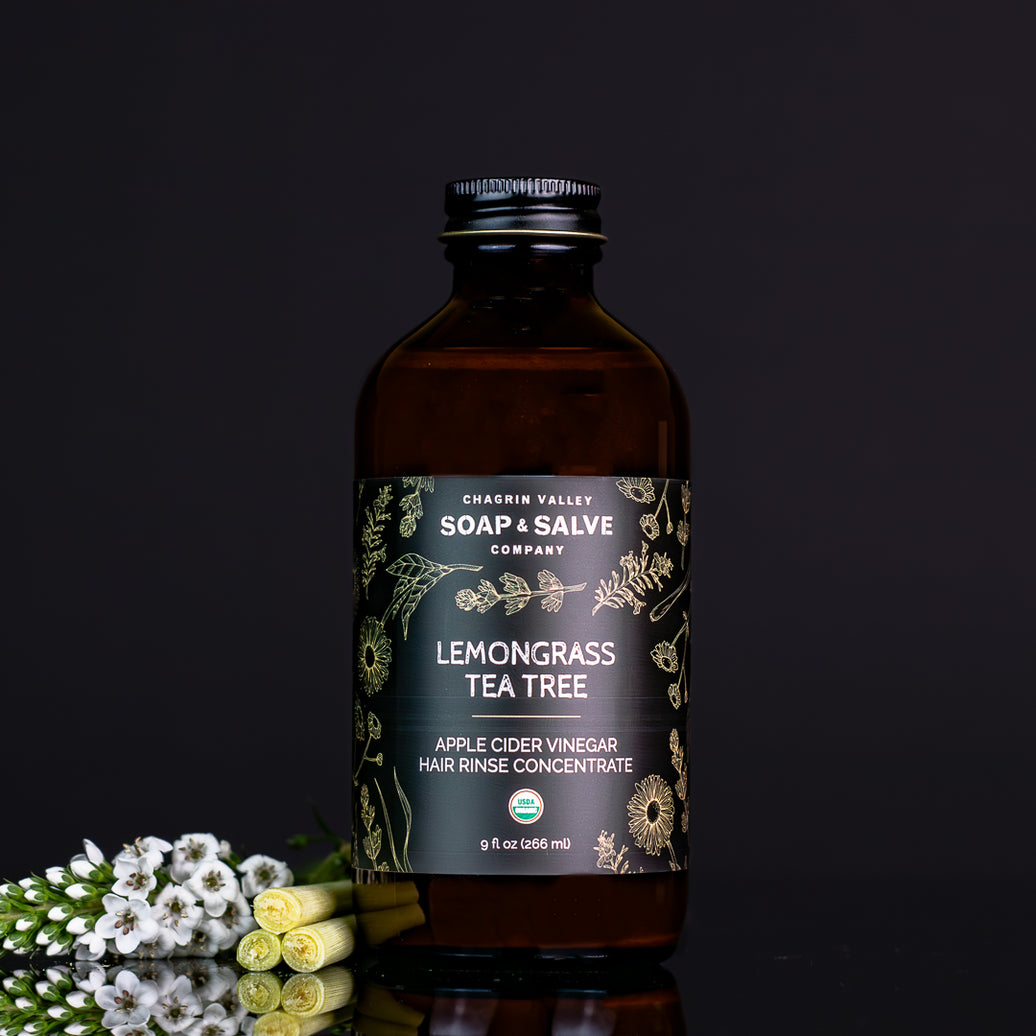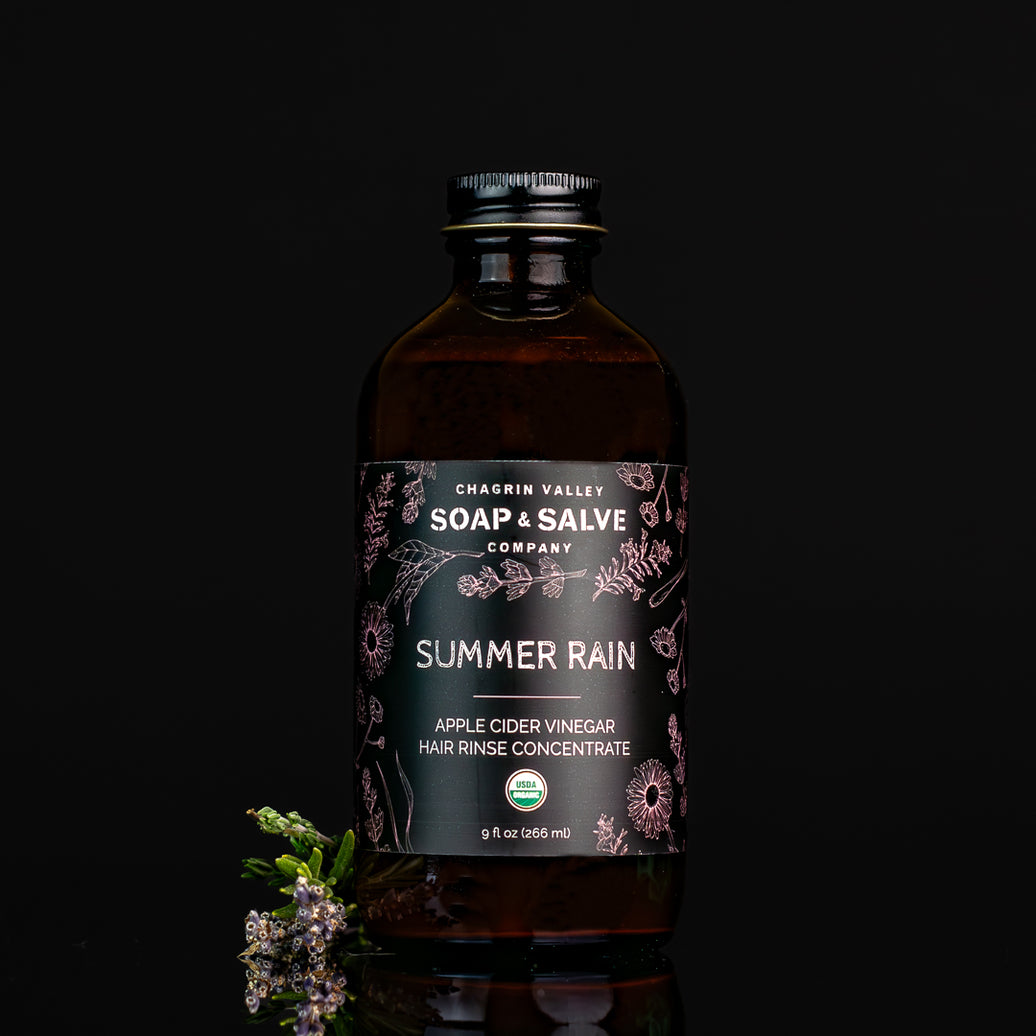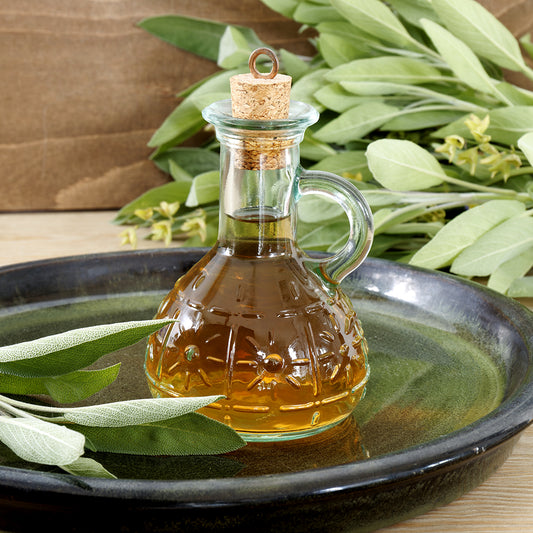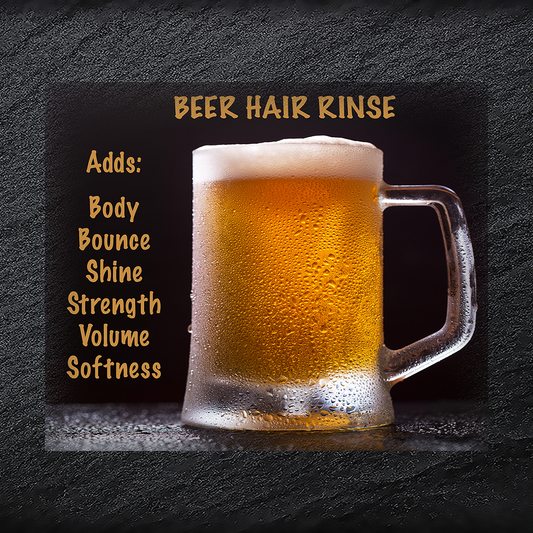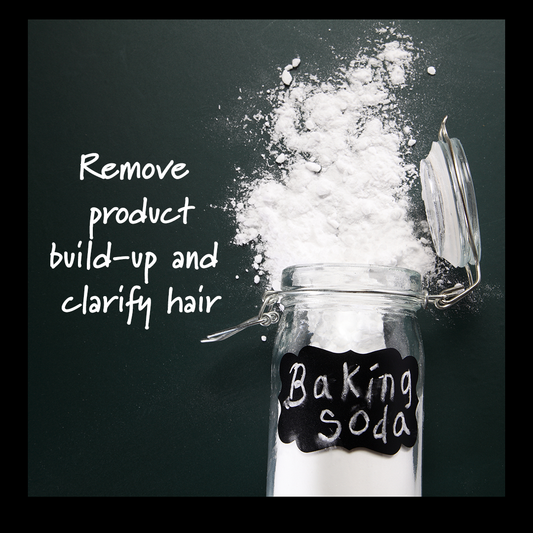Natural Remedies for Hair and Scalp "Build-Up"
If you often skip regular washes, stretch washes with dry shampoo, or saturate your hair with styling products, you may have noticed a flakey or gummy build-up on your hair and scalp.
 The combination of product build-up mixing with your scalp's natural oils and sweat can create quite a greasy, grimy mess!
The combination of product build-up mixing with your scalp's natural oils and sweat can create quite a greasy, grimy mess!
While build-up can cause hair to look dull and lifeless, it can also make adjusting to natural shampoo bars especially frustrating.
Natural Build-Up on Hair
We secrete sebum, natural oils, from our sebaceous glands (yellow) and sweat from the sweat glands (blue) located in our scalp.
Also, as new skin cells form, we shed the old dead skin cells from our scalp.
So, we all naturally create this lovely mixture of sweat, oil, and dead skin cells that can coat our hair and scalp--this is the natural build up!
Since everybody is different, you may have an overactive gland or two or shed skin cells a bit more slowly than someone else. Sometimes the dead skin cells lining the opening of your hair follicle do not shed properly and clog your hair follicles, producing more build up and an itchy scalp.
Product Build-Up on Hair
Product buildup is exactly what it sounds like, a gradual accumulation of hair care products that create a waxy layer on the hair strands and scalp.

The daily use of almost any hair care product can cause buildup.
A surprisingly large number of hair care products like conditioners, styling sprays, hair gels and even shampoos will leave a trace of film on the hair that accumulates over time even with regular shampooing.
Commercial liquid shampoos and conditioners often contain waxes, synthetic silicones, and silica that coat your hair, to make it "feel" nice, but leave a behind a residue.
Synthetic silicones are derived from polymers which are soft, plastic, gel-like substances that are hard to remove from your hair and scalp. Styling products can also add to residue build-up.
So, the very shampoos and conditioners designed to clean and shine your hair can leave residue on the hair and scalp that accumulates over time. As build-up increases regular shampoos struggle to remove the film.
Hard Water Can Cause Build-Up
The same problem that clogs your coffee maker and causes spots your dishes can cause hair to become dull, limp, or frizzy and more prone to tangles and breakage.
Hard water contains a lot of dissolved minerals, such as iron, calcium, magnesium, and silicon which can lead to deposits gradually building up on the hair shaft.
These minerals will also react with ingredients in shampoos and reduce their ability to clean properly. As a result hair residue is not properly washed away. Even more problematic is that fact that hard water can cause some product ingredients to precipitate out and deposit onto your hair, which contributes to greater product build up.
These minerals may also be a cause for the brassy color seen in blonde or grey hair.
Why Is Hair Build-Up A Problem?
Product build up on your hair prevents moisture, oils, and other nutrients from penetrating your hair, which can lead to a flaky scalp and other unpleasant scalp issues.
As the hair strand become coated, shampoos, conditioners, and other styling products can only sit on the surface of the hair. It may feel as if your hair is coated with something. Not only does this prevent products from working properly, but it also affects the texture and appearance of the hair.
The coated hair will also attracts dirt, causing the hair to feel "heavy" as it becomes less and less manageable. Even when your hair has been freshly washed, it may still look dull, flat, lifeless, and dirty with no shine and be more prone to tangles and damage.
If you repeatedly have ‘bad’ hair days after washing, your hair might be suffering from product buildup.
Prepare Your Hair Before Shampooing
 It is important to remove natural and product build-up from your hair, especially if you are switching to a natural shampoo bar.
It is important to remove natural and product build-up from your hair, especially if you are switching to a natural shampoo bar.
This step is really important if you use lots of products or your hair is used to detergent shampoo. Most people that have problems adjusting to shampoo bars usually skip this step.
While liquid shampoos and shampoo bars made with detergents may be better at removing residue they can also strip both hair and scalp from their natural oils that moisturize the scalp. When you stop using detergents shampoos your scalp will need time to re-balance its oil production.
Natural Shampoo Bars
Our natural shampoo bars are very gentle cleansers. They may have a difficult time removing the build-up of chemicals and pollutants that have collected on your hair and scalp after years of using liquid shampoos and conditioners. The build-up may look similar to dandruff, but it is usually more localized and does not itch.
Clarifying your hair is a way to remove the build-ups some products leave on your hair which can make your hair dull and lifeless.
WHAT CAN YOU DO TO HELP WITH BUILD-UP?
Keep in mind that if you have years of product build-up, the problem may not resolve with one simple solution. To keep build-up from returning a monthly treatment is suggested, but always listen to your hair. If you are unsure, ask your hair care professional for advice.
When you rid hair of natural build-up and product residue, your hair will feel clean and appear much softer and shinier.
If you try any of the recipes below and experience any skin irritation or discomfort stop using it. The recipe below are pretty conservative and mild. You can always reduce or increase the active ingredient in each as you learn what works for you.
Simple Baking Soda Clarifying Rinse Recipe 
Regular household baking soda (sodium bicarbonate) is an easy clarifier to use. Baking soda naturally lifts grease and product residue from your hair.
- 1 tablespoon baking soda
- 2 cups warm water
Combine the ingredients in a spray bottle or cup. Stir until the powdered crystals are completely blended. Wet the hair and spray or pour the rinse on your hair. Gently rub the mixture into your hair and scalp. Rinse thoroughly with warm water, then shampoo with your regular shampoo.
Some say that a baking soda rinse works well if you swim often since chlorine can cause problems with your hair.
If your scalp suffers from severe residue build up a concentrated baking soda paste may help.
- 2 tablespoons of baking soda
- 1/2 cup warm water
Combine the ingredients in a small bowl and stir until you get a thick paste. Wet your hair and apply the paste to your scalp. Gently massage the paste into your scalp with your finger tips. Although you will obviously get some paste on your hair, that is not the goal. The goal is the scalp.
Thoroughly rinse your hair to remove the baking soda paste. Then wash and condition as usual.
Learn More Blog: "Baking Soda Clarifying Hair Rinse."
Simple Vinegar Rinse Recipe

This household staple is a natural way to remove residue left on your hair from shampoos, conditioners, and styling products.
Apple Cider Vinegar (ACV) removes scaly build-up and residue from hair shafts to cleanse and clarify the hair and scalp without stripping the hair of its natural oils.
- Mix 2 tablespoons of apple cider vinegar (ACV) with 8 ounces of water in a plastic squeeze bottle, spray bottle, or cup
- Gently rub the vinegar mixture into your scalp and through your hair.
- Rinse thoroughly with warm water.
- Experiment to find a dilution that works best for your hair type (dry hair likes less ACV and oily hair likes more).
An apple cider vinegar hair rinse can also help close the hair’s cuticle which helps with tangles and leaves hair smooth and shiny. If you have color treated hair be aware that vinegar rinses may cause color to fade.
If you want some variation, create a vinegar rinse tailored to your hair by adding herbs and/or natural essential oils.
Read more about "How To Make Your Own Apple Cider Vinegar Hair Rinse."
While a simple ACV rinse is easy to make, many of our customers asked us to add them to our product line. We infuse our organic apple cider vinegar rinses with certified organic herbs and organic essential oils that are great for the hair and scalp.
Check out our Organic Apple Cider Vinegar Hair Rinses
Simple Beer Rinse
Flat beer can be used as a clarifying rinse to help remove buildup from hair products.
The malt and hops in beer are rich in both protein and vitamins which can help improve texture and add luster and shine to transform lackluster hair into soft and radiant locks.
- Shampoo and rinse hair as usual but do not use conditioner--that is where the beer comes in!
- Pour room temperature, flat beer onto your hair and slowly massage it into the roots and hair length for about one minute.
- Allow the beer rinse to remain on your hair for a few minutes before rinsing with cold water.
- A cool-water rinse will help further seal the cuticle, leading to more luster and shine.
Read more about How to Make and Use a Beer Hair Rinse
Lemon Juice Hair Rinse
 Lemon juice is often used as natural hair care remedy.
Lemon juice is often used as natural hair care remedy.
The acidic nature of the juice helps dissolve residue build-up which helps improve the health of the hair follicles.
Keep in mind that lemon juice is often used to lighten hair.
- Combine 1 tablespoon of lemon juice with 3 cups of water in a large pitcher or bottle
- Wash your hair as usual and rinse thoroughly
- Apply the lemon juice mixture to your hair allowing it to run down to the ends being careful to avoid getting any in the eyes
- Let it sit for a couple of minutes and rinse well with plain water
- Lemon juice can cause hair to become dry, so use a conditioner if desired
Conclusion
Many people experience build up at one time or another. Build-up from natural oils, everyday grime, hair products, and minerals in hard water can make your hair look and feel dry, brittle, dull and drab.
Natural hair rinses are easy to make with ingredients found in your kitchen. They can not only remove residue build-up, but can also make hair appear soft and shiny.
Everyone's hair and scalp are unique and depending on your individual hair texture, porosity, and thickness, you will not have the same experiences with build-up or hair rinses as anyone else.
You may have to experiment with the type ingredients your hair likes as well as the concentrations. If you have years of product build-up, the problem may not resolve with one simple solution and you may need a more concentrated rinse at first.
